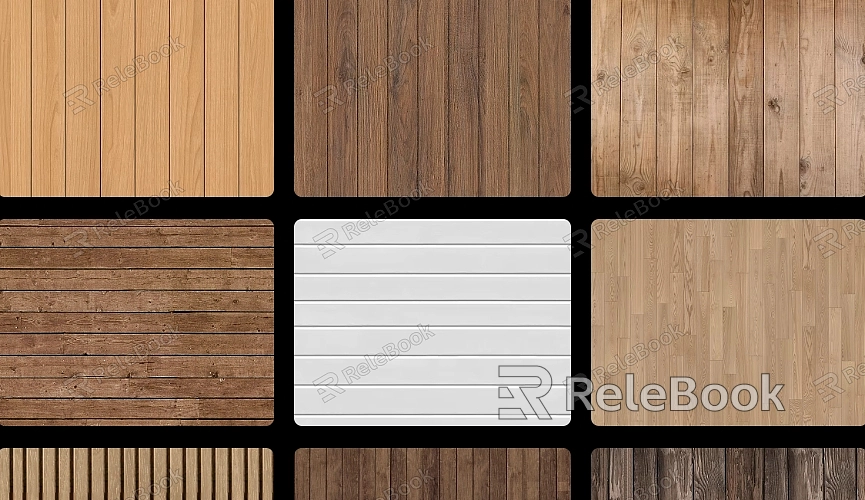Application of Grain Texture Background in Blender
Within the realm of 3D creation in Blender, the use of grain texture backgrounds stands out due to their unique roughness and visual depth, enhancing the rendering effects of 3D models and virtual scenes. They add a heightened sense of tactile realism and visual complexity, infusing scenes with a natural, earthy texture that makes models appear as if they're placed upon a realistic rough surface, thereby enriching the image's depth. Let's explore the diverse applications of grain texture backgrounds in Blender and showcase their textural characteristics in various scenarios.

1. Wood Grain Texture
By applying grain textures to model surfaces, you can easily simulate the granular feel and texture of wood, making wooden models appear more vivid. For instance, in an antique wooden furniture piece, the grain texture vividly portrays the wood's aging and weathering marks.
2. Farmland Soil Scenes
When simulating farmland or soil scenes, grain texture backgrounds add rich granularity to the ground, making every soil particle distinctly visible. Such scene renders appear more realistic, almost allowing one to feel the texture of the soil.
3. Rough Pottery Look
For pottery or ceramics models, applying grain textures to surfaces adds a unique granular feel and delicate ceramic texture. This effect makes pottery look more primitive and textured.
4. Frosted Glass Material
When designing glass surfaces, grain textures add a frosted effect, presenting a rough yet warm touch to the glass material. For example, in lampshades or glass containers' rendering, this effect breaks the smooth surface, imparting a natural texture to the entire scene.
5. Bread Baking Simulation
In scenes depicting bread or baking, the use of grain texture backgrounds adds granularity to the food's surface, making baked goods appear more realistic, almost allowing one to smell the fragrance of the bread.
6. Stone Wall Effects
Applying grain textures to stone surfaces simulates the granular texture and roughness of stone walls. Such textures make stone surfaces appear more robust and natural, perfect for castle or cave scenes.
7. Marble Countertop Simulation
In scenes designing marble countertops, grain texture backgrounds add granularity and natural texture to the marble surface, elevating the entire scene's appearance to a more luxurious and refined level.
8. Metal Surface Texture
Applying grain textures to metal surfaces displays the granular feel and unique texture of metal. For instance, when simulating ancient metal doors or utensils, grain textures add considerable depth to the metal surface.
These examples vividly demonstrate the versatility and creative potential of using grain texture background textures in Blender. Grain textures infuse scenes with rich textures, making models or scenes more vivid and natural. If you require a variety of high-quality 3D textures and HDRI, you can download them from Relebook and directly import the textures into your models for immediate use.

